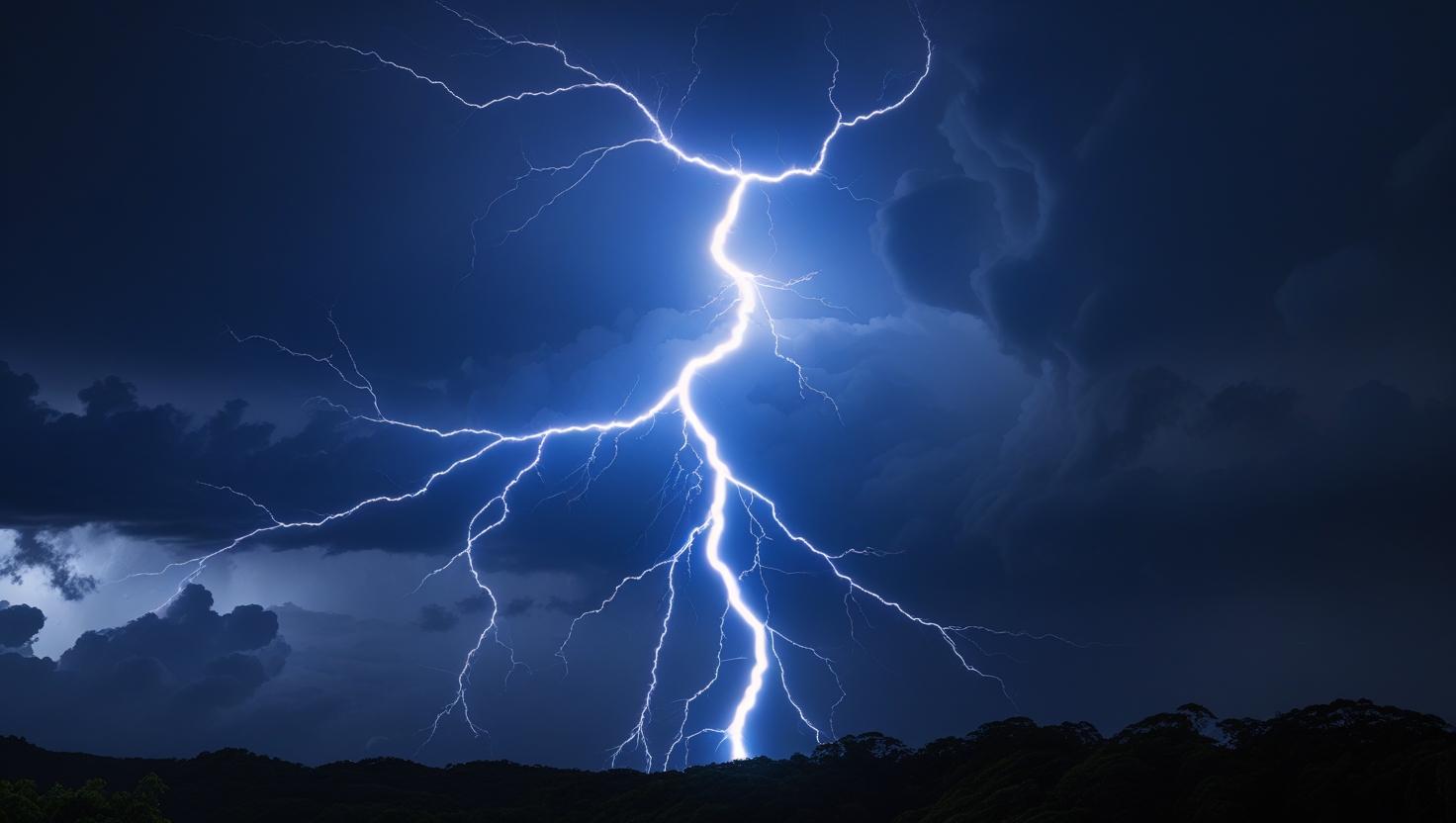
The Science Behind Lightning
Lightning forms when static electricity builds up inside storm clouds. As warm air rises and cold air sinks, ice particles collide and create electrical charges. The positive and negative charges separate until the tension becomes too much. That’s when a bolt of lightning flashes, searching for the quickest path to the ground.
When lightning strikes, it can release up to a billion volts of electricity. The heat from a strike can reach 50,000 degrees Fahrenheit—five times hotter than the surface of the sun. That power explains why strikes can start fires, destroy trees, and cause serious injuries in humans.
Why Lightning Rarely Strikes Twice
You’ve probably heard the saying, “lightning never strikes twice.” While not completely true, it’s uncommon for lightning to hit the same person or place again. Tall objects like skyscrapers and towers are exceptions because they attract electricity. For everyday people, though, getting struck once is already rare. The odds of being struck in any given year in the U.S. are less than one in a million.
The Day My Ex-Husband Was Struck
I know lightning strikes are rare because I witnessed one firsthand. My ex-husband was struck right in front of me. We were leaving my grandmother’s house one stormy afternoon when the rain began pouring too hard to leave. We waited in the garage for it to let up.
He was holding our baby boy, tucked inside his shirt to keep him dry. We had been bickering, like always, because he was a narcissistic liar and I had caught him in another one. I remember him saying, “I swear to God,” and I snapped back, “Don’t you dare swear when you’re lying!” His response was, “F— God.”
At that exact moment, the loudest boom and brightest flash lit up the garage. He screamed—he had been struck by lightning. The blast blew a hole through his shirt, threw his heart out of rhythm, and left a burn across his chest. Miraculously, our baby was unharmed, though in shock.
The firemen later said the bolt likely hit the garage door first and bounced into him. My grandmother, deeply religious, didn’t even want him in her house afterward because she believed it was punishment. Believe what you want, but you’ll never convince me it wasn’t God. Of all people, only that man could be struck by lightning and walk away almost unscathed. Pure evil—but that’s a story for another day.
What Happens to the Body During a Strike
Lightning travels over the body’s surface in a flash, often leaving burns, ripped clothing, or scorched shoes. The electrical surge can throw off the heart’s rhythm, damage nerves, or cause memory problems. Some victims develop long-term issues, while others survive with few lasting effects. Survival often depends on how the strike hits and how quickly medical help arrives.
How to Stay Safe During a Storm
Even though lightning is rare, it’s worth knowing how to protect yourself:
- Stay indoors during storms whenever possible.
- Avoid standing near tall objects like trees, poles, or fences.
- Don’t touch metal or water when lightning is nearby.
- Wait 30 minutes after the last thunder before going back outside.
Lightning strikes are powerful reminders of how fragile we are. Some believe they’re random, while others, like me, see them as anything but coincidence. Either way, one thing’s for sure—when lightning speaks, it demands respect.
Lisa Crow contributed to this article. She is a true crime junkie and lifestyle blogger based in Waco, Texas. Lisa is the Head of Content at Gigi’s Ramblings and Southern Bred True Crime Junkie. She spends her free time traveling when she can and making memories with her large family which consists of six children and fifteen grandchildren.